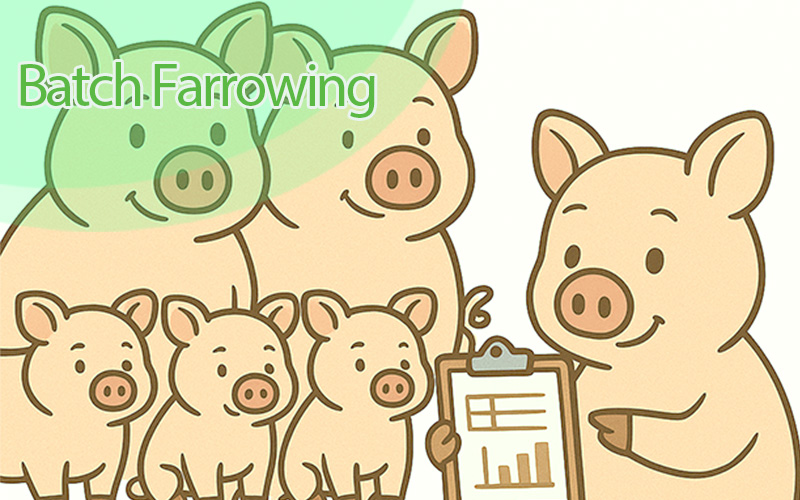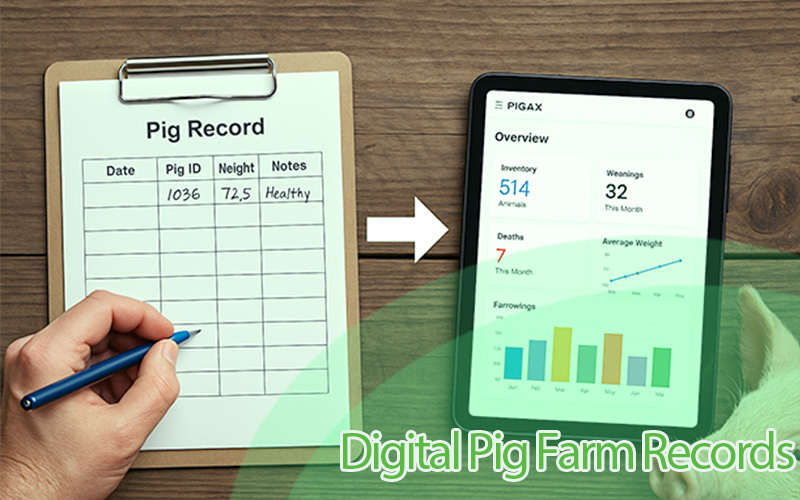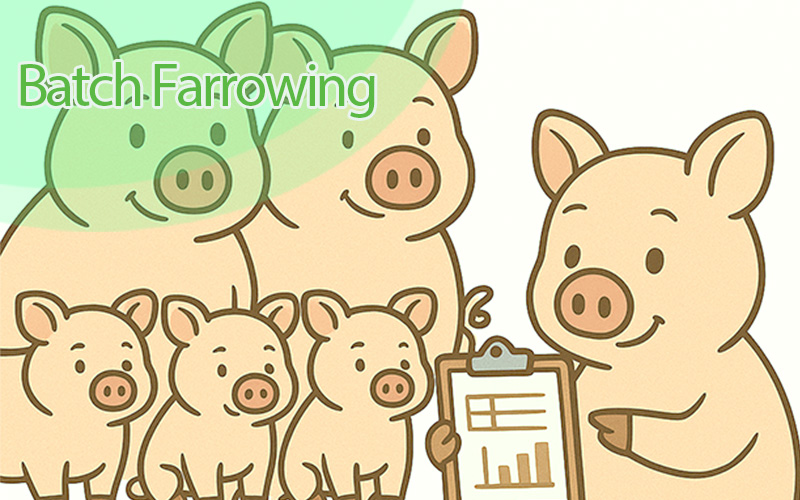Boost Pig Growth with Temperature Control
If you’re not managing the temperature of your pigs, chances are you’re wasting money, feed, and losing out on potential profits. Don’t let temperature be the reason your pigs aren’t growing to their full potential!
You might think that feed quality or genetics are the only factors that affect how well your pigs grow, but there’s one hidden factor you’re probably ignoring—temperature. Yes, you heard that right. The temperature in your piggery can make or break the growth and performance of your pigs. If you’re serious about boosting pig growth, you need to control the temperature like a pro. Here’s why and how you should do it.
Best Temperature for Pigs
Pigs are sensitive creatures. They can’t tell you when they’re too hot or too cold, but their growth and performance will certainly reflect it. The ideal temperature for pigs isn’t just about keeping them comfortable; it’s about maximizing their growth and feed efficiency.
Optimal Temperature Range:
- For piglets: 85-95°F (29-35°C)
- For growing pigs: 70-77°F (21-25°C)
- For finishing pigs: 64-70°F (18-21°C)
Deviating from these ranges can cause serious issues. If it’s too hot or too cold, pigs will either eat less or burn more calories to maintain their body temperature, which means slower growth and less profit for you. That’s why controlling the temperature is non-negotiable if you want to get the best out of your pigs.
Best temperature for piglets
Piglets are like newborn babies; they’re extremely vulnerable and need special care. For piglets, the temperature needs to be just right—between 85-95°F (29-35°C). If it’s any lower, they can suffer from chilling, leading to poor growth and even death in severe cases.
How to Keep Piglets Warm:
- Use heat lamps and heated floors in the farrowing pen.
- Ensure the piglets have a warm, dry area to retreat to.
- Monitor temperature constantly with sensors to avoid sudden drops.
Studies show that piglets in poorly regulated environments have a higher mortality rate and significantly lower weight gain. Don’t let this be your piggery.
Best Temeperature for Growing Finishing Pigs
Growing and finishing pigs, those in the 20 to 100 kg range, thrive in temperatures between 64-77°F (18-25°C). If the temperature is too high, pigs will eat less, grow slower, and become more susceptible to diseases. If it’s too low, they’ll burn extra calories just to stay warm, wasting precious feed.
How to Maintain Growing pig's Temperature:
- Use proper ventilation systems to control humidity and air temperature.
- Install cooling systems, such as evaporative cooling pads or fans, to reduce heat stress during hot weather.
- Use insulated housing to maintain warmth during colder months.
By keeping the temperature steady, you’re ensuring that every bit of feed converts into growth, not just body heat.
How High Temperature Affects the Growth of Pigs
High temperatures can be devastating for pig growth. When pigs overheat, they eat less to reduce their metabolic heat production, leading to slower growth and poor feed conversion. Heat stress can also increase aggression among pigs and cause reproductive issues.
What You Should Do:
- Cooling Systems: Install fans and misters to lower the barn temperature.
- Proper Housing: Use buildings designed for ventilation and cooling.
- Monitoring: Use temperature sensors to get real-time data and adjust conditions immediately.
Research has shown that pigs exposed to temperatures above 90°F (32°C) have a 30% reduction in growth rate compared to those kept at optimal temperatures. You can’t afford to ignore this if you’re aiming for maximum productivity.
How Low Temperature Affects the Growth of Pigs
Cold stress is just as harmful as heat stress. When the temperature drops below 64°F (18°C) for finishing pigs, they’ll eat more but won’t gain much weight because they’re using the extra feed to keep warm.
How to Combat Cold Stress:
- Heating Systems: Use heaters and insulated housing to maintain a stable temperature.
- Bedding: Provide adequate bedding to help pigs retain heat.
- Wind Protection: Ensure the pig housing is protected from drafts and wind chill.
Cold pigs are unhealthy pigs. They’re more likely to get sick and less likely to gain weight. Keep them warm, and you’ll keep them growing.
How to Regulate the Temperature of Pigs
Temperature regulation isn’t rocket science, but it does require some investment in the right equipment and practices. Here’s how you can effectively regulate the temperature in your piggery:
- Ventilation: Proper ventilation is essential in regulating temperature on pig farms. It helps to remove moisture, gases, and excess heat from the barns, thus improving the quality of the air and keeping the pigs comfortable. Farmers can use natural ventilation, which involves using open windows and doors, or mechanical ventilation, which uses fans and air conditioning units to regulate airflow.
- Heat lamps: In colder months, farmers can use heat lamps to provide warmth to the pigs. Heat lamps are designed to provide warmth while still being safe for the pigs. They can be placed in specific areas of the barn where the temperature is lowest or where piglets are kept.
- Cooling systems: In warmer months, farmers can install cooling systems, such as sprinklers or misters, to help cool the pigs. These systems can be set to a timer or controlled remotely to provide an optimal environment for the animals.
- Use Temperature Sensors: Automated temperature sensors can give you real-time data and alert you when conditions fall outside the optimal range. This allows you to make adjustments quickly and efficiently.
- Bedding: The type and amount of bedding used in the pig pens can also affect the temperature regulation in the barn. Farmers can use different types of bedding, such as straw or wood shavings, to help insulate the pens and keep the pigs warm in colder weather. In warmer months, farmers can use less bedding to prevent overheating.
- Pig housing design: The design of pig housing can also play a role in temperature regulation. For example, barns can be designed with adjustable curtains or vents that can be opened or closed to control the airflow and temperature. Additionally, farmers can use insulated walls, roofs, and floors to help maintain a stable temperature inside the barn.
Benefits of Temperature Optimization on Pig Performance
When you get the temperature right, the benefits are clear and immediate:
- Improved Growth Rates: Pigs grow faster when they’re comfortable, leading to quicker turnaround and higher profits.
- Better Feed Conversion: Pigs convert feed more efficiently, reducing feed costs and increasing your margins.
- Healthier Pigs: Optimal temperature reduces the risk of diseases and stress, meaning fewer veterinary interventions and costs.
- Enhanced Reproductive Performance: Sows kept at the right temperature have better reproductive outcomes, producing healthier and more numerous piglets.
Conclusion
If you want to boost pig growth and performance, temperature control is not optional—it’s essential. Invest in the right tools and strategies to maintain optimal temperature conditions, and you’ll see the difference in your pigs’ growth, health, and overall productivity. Don’t leave it to chance; control the temperature, and control your success.




